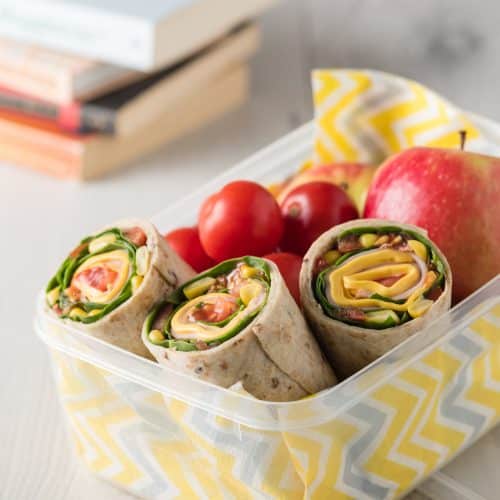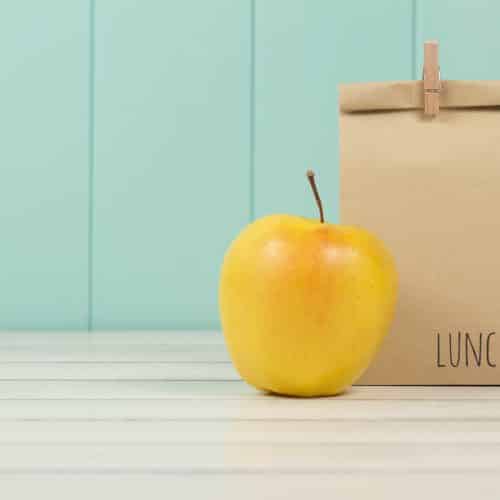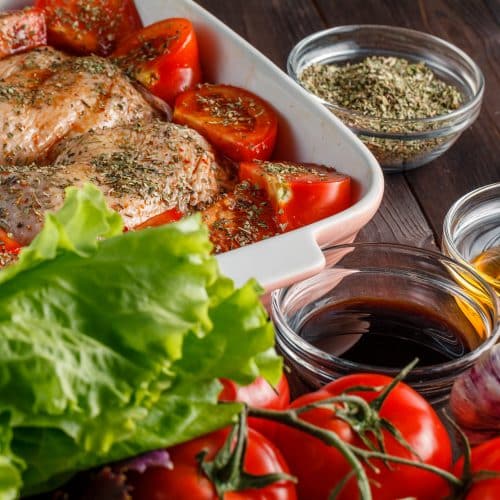
With back to school in swing and more demands on your time, it’s easy to let food and nutrition fall from the priority list. This year, look at the routine that back to school brings an opportunity to add structure and planning to your family’s food choices. Here are 4 tips to better family nutrition throughout the day.
Start with a good breakfast.
Eating breakfast is associated with better nutritional quality. And children who eat breakfast regularly are less likely to have weight problems and more likely to have good academic performance and behavior in school.[i] Many people who skip breakfast cite time as their hurdle to a healthful breakfast, but with a little planning, you or your kids can prepare and eat breakfast in just a few minutes. Aim to consume foods from at least three food groups at breakfast such as toast, peanut butter and milk.
- Stock up on quick-to-eat foods such as hot and cold cereals; lower sugar yogurts; reduced-fat cheese; eggs; whole grain breads and English muffins; and fresh, frozen and dried fruits.
- Hard boil several eggs early in the week to have them on hand.
- Cook a scrambled egg in the microwave to make an egg sandwich. Slip in some tomato and avocado slices for a flavor and nutrition boost.
- Mix oats, milk or yogurt, fruit and nuts into a mason jar for tasty, nutritious overnight oats.
- Grab a cup of yogurt, a piece of fruit and a couple handfuls of whole grain dry cereal.
Make lunches something to look forward to.
It’s really pretty simple to combine both nutrition and fun. When packing lunches, include a protein-rich food like tuna, turkey, black beans or cottage cheese as well as both fruits and vegetables. But be a little creative. Rotate lunch items, so it never gets boring, and periodically add something surprising.
- Instead of sandwiches only on sliced bread, build your sandwiches on crackers, pita bread or tortillas. Consider using hearty leafy greens rather than bread or skip the sandwich altogether and layer everything in a bowl with a whole grain (like quinoa, rice or farro).
- Add little extras like olives, toasted almonds, dried cranberries and fresh herbs to sandwiches and salads.
- Keep beverages healthful and enjoyable. Offer milk, low-fat chocolate milk, sugar-free lemonade and sugar-free flavored water.
- Tuck a cheery or encouraging note into your student’s lunch on test days – or any day.
Have healthful snacks ready.
Hungry kids are likely to grab the first easy thing they see, so make sure that’s something nutritious. If your household is like many in America, this is a good opportunity to focus on the foods we should be eating more of. Some good choices are cut vegetables with reduced-fat dip or hummus, reduced-fat cheese and cut fruit, yogurt and granola, dried fruit and nuts.
Commit to family dinners.
Along with back to school comes back to sports, scouts and a host of other activities. Don’t let hectic schedules rob your family of the enormous benefits of family dinners. Teens who regularly eat family meals have better nutrition, eat more fruits and vegetables, enjoy better connectedness at home, exhibit better mental health and are less likely to use drugs.[ii] Eating together is a terrific way to bond, discuss the problems and triumphs of the day, model good eating behaviors and share family values.
- Involve kids in planning and preparing meals. Younger kids can set the table, bring the proper number of carrots or potatoes to the cook and offer suggestions for dinner menus or themes like Taco Tuesday. Older kids can do these things as well as help prepare and perhaps even shop for food.
- On weekends or whenever you have a bit of free time, prep some foods for the week. Wash and chop vegetables, cook up a big batch of brown rice, or cook soups and stews to eat later in the week.
- Keep favorite meals and menus on paper or on your computer. Add to them and reuse them to create your perfect meal plan.
- When time is especially tight, combine prepared foods like a rotisserie chicken with easy sides like canned fruit and frozen vegetables.
There’s no doubt that back to school time is hectic and stressful. With a little planning and some family commitment, you can turn the structure of the school day into your framework for healthful eating.
 Jill Weisenberger, MS, RDN, CDE, FAND has worked as both a nutrition counselor and a diabetes educator in the hospital and research settings, and now in private practice in Newport News, VA. Jill is the author of Diabetes Weight Loss – Week by Week and two upcoming books, The Overworked Person’s Guide to Better Nutrition and 21 Things You Need to Know about Diabetes and Your Heart. She is a member of the Academy of Nutrition and Dietetics, the American Association of Diabetes Educators and the American Diabetes Association. Jill is a paid contributor to the Calorie Control Council. Follow Jill on Twitter @NutritionJill and find more at www.JillWeisenberger.com.
Jill Weisenberger, MS, RDN, CDE, FAND has worked as both a nutrition counselor and a diabetes educator in the hospital and research settings, and now in private practice in Newport News, VA. Jill is the author of Diabetes Weight Loss – Week by Week and two upcoming books, The Overworked Person’s Guide to Better Nutrition and 21 Things You Need to Know about Diabetes and Your Heart. She is a member of the Academy of Nutrition and Dietetics, the American Association of Diabetes Educators and the American Diabetes Association. Jill is a paid contributor to the Calorie Control Council. Follow Jill on Twitter @NutritionJill and find more at www.JillWeisenberger.com.




